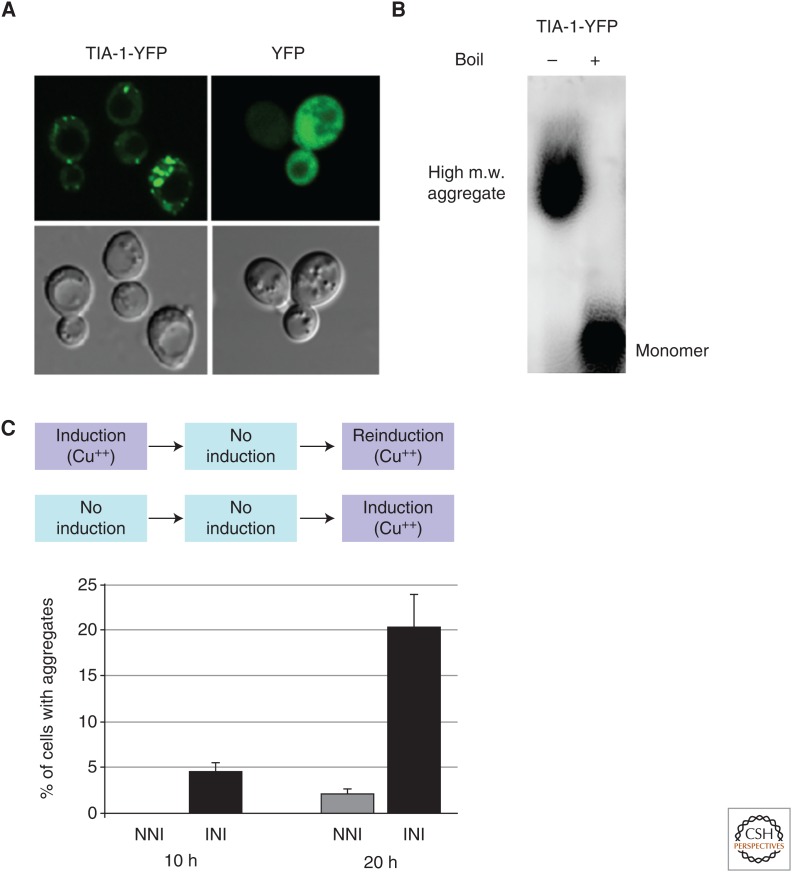Figure 3.
(A) Overexpression of yellow fluorescent protein (YFP)-tagged mouse TIA-1 in yeast leads to the formation of stress granule–like structures. In contrast, YFP alone does not produce such structures. (B) TIA-1-YFP forms high-molecular-weight (m.w.) aggregates that are sodium dodecyl sulfate (SDS)-resistant, as observed by SDS-agarose gel electrophoresis. Boiling the extracts causes the collapse of aggregated protein into monomer. (C) Formation of mouse TIA-1 aggregates in a heterologous yeast assay occurs more rapidly in yeast cultures that have been previously induced to express the protein (INI), compared with a culture that is freshly induced in parallel (NNI). No TIA-1 aggregates are observed during the “no induction” phase of INI cultures. The seeding effect is observed at both 10 and 20 h after reinduction (INI) of TIA-1.

